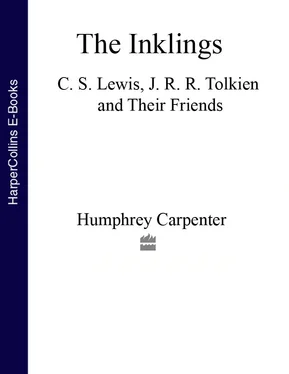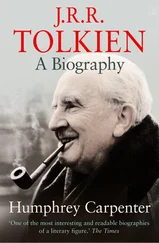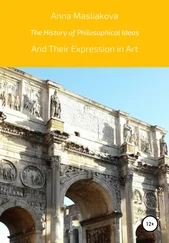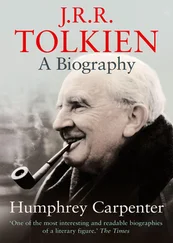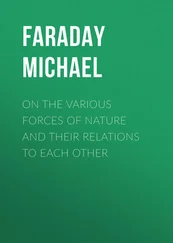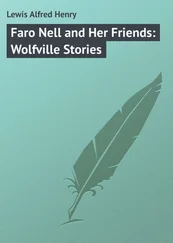1 ...6 7 8 10 11 12 ...22 This state of affairs applied to the men and women who chose the course which specialised in post-Chaucerian literature – in fact about ninety per cent of the undergraduates reading English Nor were conditions much better for the few who opted for early and medieval studies, for they had to spend a good deal of time – wasted time, thought Tolkien – away from their special field, reading Shakespeare and Milton. Tolkien was determined to end this, and to get the Faculty to accept a remodelled syllabus, in which everyone would be expected to read widely in early English literature, while the early and medieval specialists could pursue their chosen work without having to turn aside and study later writers.
Few people in the Faculty quarrelled with these notions as such. The trouble was that in order to make room for a more thorough study of the early period some other part of the syllabus would have to be abandoned or made optional. Tolkien recommended, in an article in the Oxford Magazine, ‘jettisoning certainly the nineteenth century (unless parts of it could appear as an “additional subject”)’, and suggested that the compulsory papers should stop at 1830.
The notion of improving the study of ancient literature by curtailing the reading of modern writers had a certain appeal at Oxford. The English Faculty had always been embarrassed by those in the University – and there were many – who alleged that undergraduates could read English literature in their baths, and did not need dons to teach it to them any more than they needed nursemaids to wipe their noses. (Lewis himself shared this view.) The study of recent writers was particularly open to this charge; so there was some attraction in amputating the nineteenth century from the syllabus, particularly if it was to give place to what was indubitably a more scholarly pursuit in Oxford’s eyes, the reading of Anglo-Saxon and Middle English. This is perhaps why, though Tolkien’s proposal to finish the syllabus at 1830 was strongly resisted by many of the ‘literature’ dons, it was not quashed, but became the subject of considerable argument in the English Faculty during the months following Tolkien’s first meeting with Lewis; years, indeed, rather than months, for it was not until 1931 that the issue was settled.
*
At first, Lewis was among the opponents of Tolkien’s proposals. But soon he began to come round to Tolkien’s side in the English School faction fight. This was due in the beginning to the Coalbiters.
Tolkien had decided to form a club among the dons to read Icelandic sagas and myths. Among his proposals for syllabus reform was the suggestion that Old Icelandic, also known as Old Norse, should be given a more prominent place among early and medieval studies, at least for the specialists; and he thought that the best way to proselytise would be to show his colleagues how enjoyable the reading of Icelandic can be. So the Coalbiters came into existence.
Their Icelandic name was Kolbítar, a jesting term meaning ‘men who lounge so close to the fire in winter that they bite the coal’. Tolkien founded the club in the spring term of 1926. Its first members included several men with a reasonable knowledge of Icelandic: R. M. Dawkins, the Professor of Byzantine and Modern Greek; C. T. Onions of the Dictionary; G. E. K. Braunholtz, the Professor of Comparative Philology; and John Fraser, the Celtic Professor. But another founder-member was Nevill Coghill, who knew no Icelandic; and soon he was joined by others who were similarly ignorant and were merely enthusiastic beginners. These included John Bryson, the English tutor at Balliol College; George Gordon, the Professor of English Literature and later President of Magdalen (who had been Tolkien’s head of department at Leeds); and two Magdalen dons, Bruce McFarlane, the historian, and C. S. Lewis.
The suggestion that Lewis be invited to join may have come from John Bryson, a fellow Ulsterman, or from George Gordon, who had taught Lewis as an undergraduate and had been influential in getting him the Magdalen fellowship (Gordon was a great intriguer and campaigner: he had also had a hand in Tolkien’s election as Professor of Anglo-Saxon). Or maybe it was Tolkien himself who discovered that Lewis was keen to join the club. At all events by January 1927 Lewis was attending the Kolbítar, and was finding it invigorating.
Like Coghill and several of the others he could not, when he first joined, read more than a few words of Icelandic without a dictionary. But this did not matter. During the evening, those present would take turns to translate from the text they were reading. Tolkien, who was of course expert in the language and knew the text well, would improvise a perfect translation of perhaps a dozen pages. Then Dawkins and others who had a working knowledge of Icelandic would translate perhaps a page each. Then the beginners – Lewis, Coghill, Bryson and the others – would work their way through no more than a paragraph or two, and might have to call on Tolkien for help in a difficult passage. The learners certainly found it hard going; as John Bryson remarked, ‘When we were enrolled we never realised that it was going to be such a business.’ He recalled that on one occasion ‘a certain scholar, who must remain nameless, was actually caught using a printed “crib” under the table as he translated his passage apparently impromptu. He was not invited back again!’ But most of them took it seriously, especially Lewis.
For someone who had been devoted to Norse myths and legends since adolescence it was exhilarating to be reading them in the original language. ‘Spent the morning partly on the Edda,’ Lewis wrote in his diary in February 1927: the Coalbiters were working their way through the Younger Edda, which contains a version of the great Norse myths. ‘Hammered my way through a couple of pages in about an hour, but I am making some headway. It is an exciting experience when I remember my first passion for things Norse under the initiation of Longfellow. It seemed impossible then that I should ever come to read these things in the original. The old authentic thrill came back to me once or twice this morning: the mere names of god and giant catching my eye as I turned the pages of Zoega’s dictionary were enough.’
The Coalbiters met once every few weeks in term-time, progressing through the sagas towards their eventual goal of the Elder Edda. But not until three years had passed did Lewis begin to realise that the thrill he received from Norse mythology was shared by Tolkien.
On 3 December 1929 Lewis wrote to Arthur Greeves: ‘One week I was up till 2.30 on Monday, talking to the Anglo Saxon professor Tolkien, who came back with me to College from a society and sat discoursing of the gods and giants of Asgard for three hours, then departing in the wind and rain – who could turn him out, for the fire was bright and the talk good.’
It was the beginning of a friendship: the moment, as Lewis once remarked, when someone who has till then believed his feelings to be unique cries out, ‘What? You too? I thought I was the only one.’
*
Tolkien entirely shared Lewis’s love for ‘Northernness’. He too had first discovered the taste in childhood 1when he found in a book of fairy stories the tale of Sigurd the Völsung who slew the dragon Fafnir. Reading it, the young Tolkien fell under the spell of what he called ‘the nameless North’. He ‘desired dragons with a profound desire’. At school in Birmingham he taught himself the Norse language and began to read the myths and sagas in their original words. Like Lewis, he fell under the spell of William Morris. And, just as Lewis during adolescence had begun to write his own Norse-style poetry and drama, Tolkien at about the age of eighteen conceived the idea of recreating the ‘Northernness’ that delighted him by writing a cycle of myth and legend. But it was a far more ambitious task than anything Lewis attempted, for whereas Lewis had merely written a pastiche of existing Norse stories, Tolkien began to create a whole new mythology out of his imagination. And while Lewis soon passed on from his adolescent ‘Northern’ writings to other kinds of poetry, Tolkien continued to work at his cycle year after year. It remained the centre of his imaginative life.
Читать дальше
